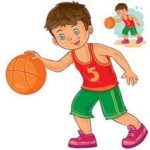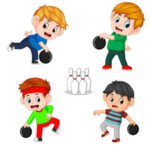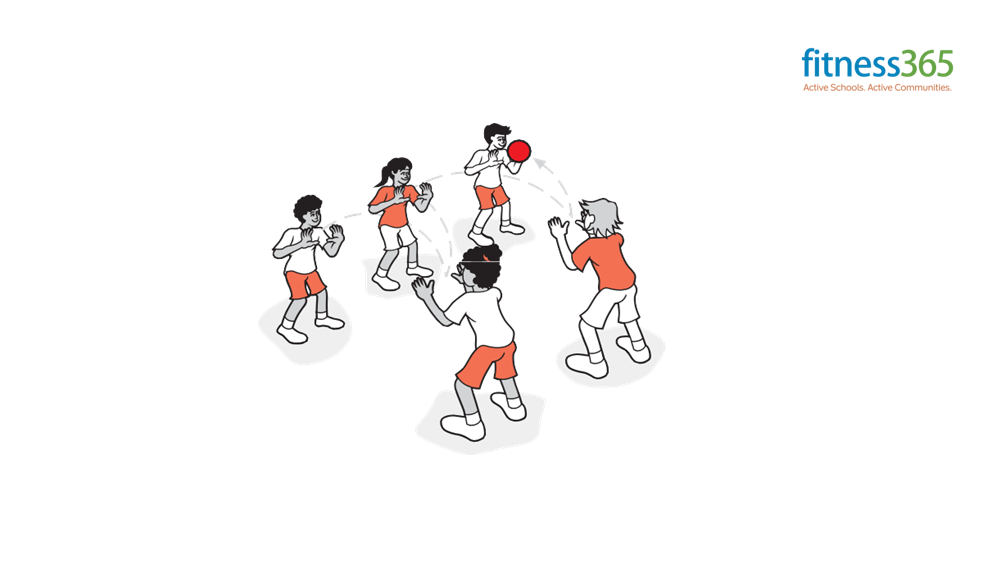
by Neetu | Jun 4, 2020 | Fitness Activity
Movement skills/concepts
Two-handed pass to a stationary target, space awareness (pathways and patterns), and relationships (with others).
Set-up
- Large balls.
- Grass or hard area.
- Groups of five–six.
Activity 1: Circles
In a circle of five–six with two balls
- throw/pass a ball around the circle, then reverse the direction on a signal
- throw/pass two balls in the same direction – play Dog and Rabbit: can one ball catch the other?
- throw/pass to anyone – one ball than two balls
- throw/pass to every second person
- face outwards and pass back overhead
- pass to anyone except an adjacent player. How many passes can you make in 30 seconds?
- surround a leader in the center, who throws/passes to each player in turn, to anyone, passes a ball out as the other is passed in (In and Out)
Activity 2: Zigzag
Groups of five or six in two lines facing each other.
- pass a ball and zigzag up and down
- pass it up one line and pass it down the other line
- pass one ball, then, when it reaches the end, pass the next, then the next, etc
- pass one ball, then the next, then the next, etc
- pass one ball as many times as possible… seconds
- using two balls, throw to anyone on the other line who doesn’t have a ball
Variations
Vary skill: Use a push pass (soccer, hockey), chest pass, two-handed overhead pass.
Vary equipment: Use different balls, (e.g. rugby ball for a spiral pass).
Vary distance: Increase or decrease the distance required for the pass.
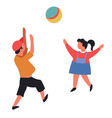
by Neetu | Jun 4, 2020 | Fitness Activity
Movement skills/concepts
Catching a ball rolled or thrown from different angles and levels and at different speeds.
Set-up
- A variety of balls.
- Children in pairs are spread out in a hard flat area.
Activity
- pick up a ball rolled by your partner with two hands/one hand/the other hand
- step across and pick up a ball rolled a little to one side, then on the other side
- catch a ball bounced to you down low/up high
- catch a ball thrown to you down low/up high
- move around, bouncing and catching with your partner
- move around, throwing and catching
- make 5–10 catches without dropping the ball
- catch as many times as possible in 30 seconds
- move further apart and still catch the ball
- throw the ball over a net/goalpost and catch it
Variations
Vary equipment: Try the throwing and catching activities with different types of ball/objects.
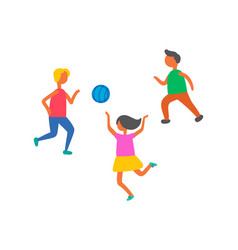
by Neetu | Jun 4, 2020 | Fitness Activity
Movement skills/concepts
Throwing overarm, space awareness (levels and direction), time and energy, and relationships (with others).
Set-up
- Small balls, cones/markers, targets (containers, hoops, bins, lines, skittles, gutter board).
- Targets and pairs of cones are set out in a defined area that includes a wall. Children, working individually and in pairs, are spread out with a ball each.
Activity
Individually (Can you throw the ball overarm…?)
- as far as possible
- as hard as possible
- up high
- at a ground target (hoop/circle/line/bin)
- at a wall/wall target
- over a rugby post
- between cones/markers
In pairs (Can you throw the ball overarm…?)
- and bounce to your partner
- so that your partner can catch it without moving
- over an ever-increasing distance
- at a wall and catch it on the rebound
- with right/left hand
- at a target (hoop/skittle/line/gutter board)
- from different levels – high/low/shoulder height
- as high as you can
Can you see …?
- ball in fingers
- eyes on target
- side on – weight on the rear foot
- stepping forward on opposite foot to throwing arm
- following through
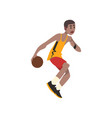
by Neetu | Jun 4, 2020 | Fitness Activity
Movement skills/concepts
Exploring underarm throwing, space awareness (direction), and relationships (with others).
Set-up
- A variety of small balls or beanbags, net/rope, and hoops.
- Children in pairs, with one ball per pair, are spread out in a defined hard or grass area that includes a wall for throwing against.
Activity
Using an underarm throw, who can …?
- bounce the ball to your partner
- bounce the ball in a hoop/on a line
- bounce the ball to your partner and move to a new place
- throw the ball to your partner and move to a new place
- throw the ball to your partner on the full
- throw non-stop for 1 minute
Still using an underarm throw, can you …?
- use your other hand to do all the tasks you’ve just done
- throw high, medium and low
- throw against a wall
- throw over a net/rope
- throw through a hoop
Can you see …?
- holding the ball in fingers
- eyes on target
- swinging back with a straight arm
- stepping forward on opposite foot to throwing arm
- swinging arm forward and towards a target
- following through

by Neetu | Jun 4, 2020 | Fitness Activity
Movement skills/concepts
Exploring passing, throwing, catching and rolling, time and energy, and body awareness.
Set-up
- A wide variety of balls to throw and pass (small balls, large round balls, oval balls, foam balls, sea urchin balls).
- The children and balls are spread out in a defined hard or grass area.
Activity
Children select one or more balls. They begin to practice the following tasks with the ball, before changing to a different type of ball for the later tasks.
- in the air with one hand, two hands, the other hand, from hand to hand
- forwards, backward, to the side, at an angle
- as far/near as you can, moving your throwing arm(s) as fast as you can, twisting your body as fast as you can
- up high, down low, bouncing off the ground, at a target
- sitting down, kneeling, lying down
- along the ground, on a line, along the ground to a target/line, to stop between two lines or in the hoop
- overarm/underarm with one hand
- with two hands at chest level, making the ball bounce to the ground and catching it
- along the ground to a partner, bouncing high/low to a partner
- to a partner who is a long way away, to a partner who is very close
- using/without using your legs/trunk
- smoothly, using as little movement as possible
- using as much movement as possible or as jerkily as you can
- using a bounce-catch action, on the spot, while moving, turning around
- children enjoying themselves
- trying out different types of balls
- keeping eyes on the ball
Variations
Vary equipment: Complete the tasks with other objects like beanbags, frisbees, quoits, plastic containers, juggling balls, and scarves.






